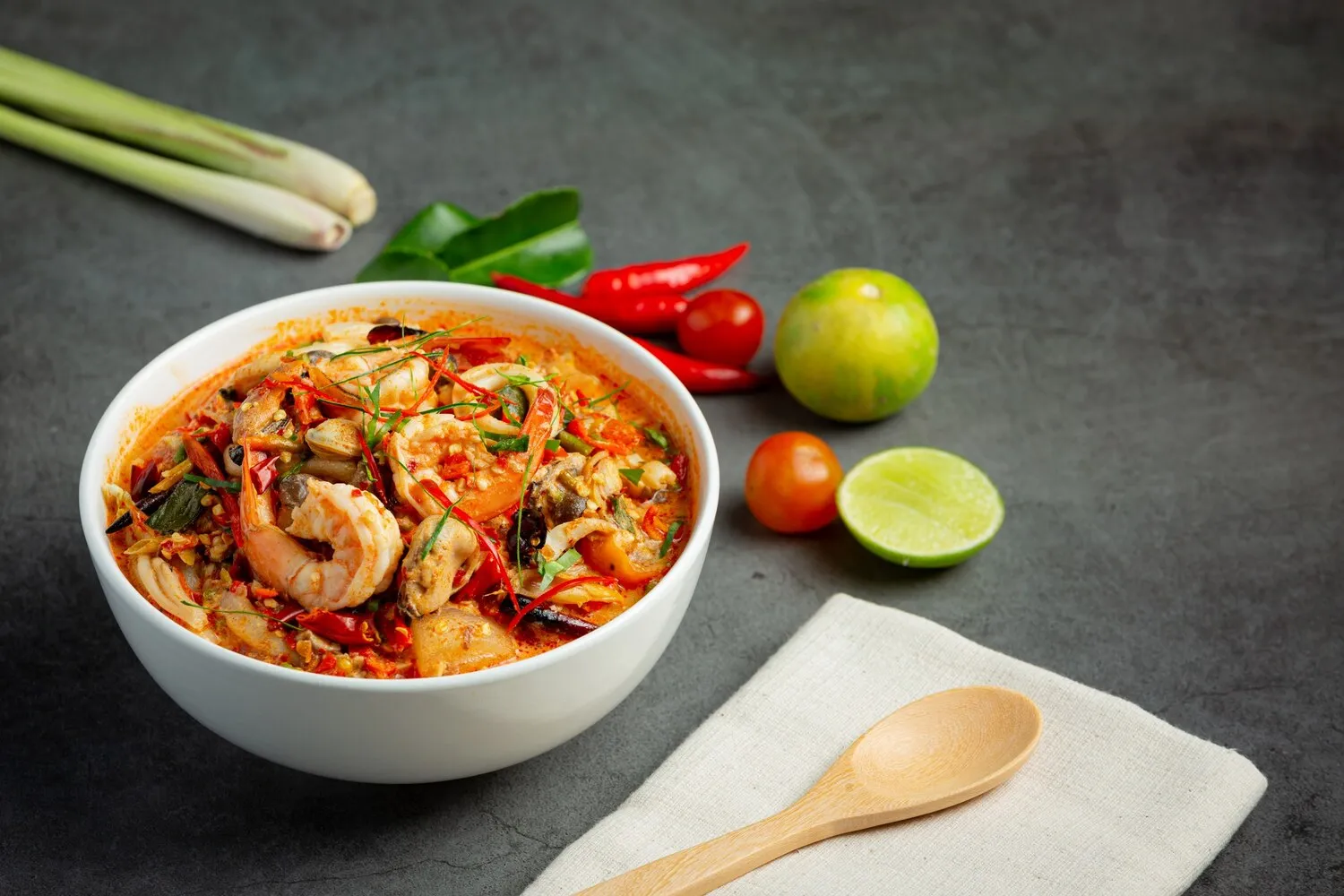
Pho (Various Types)
Pho Sunrise is known for its various pho options. This includes Pho Tai (rare beef), Pho Bo (beef), Pho Ga (chicken), and other variations. Pho consists of rice noodles in a flavorful broth, typically garnished with herbs, bean sprouts, and lime.
Nutrition Facts
* The % Daily Value (DV) tells you how much a nutrient in a serving of food contributes to a daily diet. 2,000 calories a day is used for general nutrition advice.
Pho's origins are debated, but it likely emerged in the late 19th or early 20th century in northern Vietnam, possibly influenced by French colonialism and the desire for a hearty, affordable meal. Some believe it evolved from a similar dish called 'xao trau' (stir-fried buffalo) or was inspired by the French beef stew, 'pot-au-feu.' The widespread popularity of Pho is tied to the urbanization and industrialization of Vietnam.
Pho is more than just a meal; it's a symbol of Vietnamese culture and identity, deeply ingrained in daily life. It's enjoyed at any time of day, from breakfast to late-night snacks, and is often associated with comfort, family gatherings, and national pride.
Ubiquitous Presence
Pho stalls and restaurants are found on nearly every street corner in Vietnam, offering a variety of regional variations and specialties.
Family Tradition
Making Pho at home is often a multi-generational family affair, with recipes passed down through the years and each member contributing to the process.
Comfort Food
Pho is often considered a comforting and nourishing dish, eaten when feeling under the weather or simply craving a warm and satisfying meal.
Regional Variations
Northern Pho (Hanoi style) tends to have a clearer broth and wider noodles, while Southern Pho (Saigon style) is often sweeter and served with a wider array of herbs and sauces.
Pho is characterized by a delicate balance of savory, sweet, and aromatic flavors. The broth is the heart of the dish, providing a rich, umami base, while the herbs and spices contribute layers of complexity.
The broth is traditionally made by simmering beef bones (or chicken for Pho Ga) for hours, often with charred onions, ginger, star anise, cloves, cinnamon, and coriander seeds. Fish sauce and salt are used for seasoning. The broth should be clear and fragrant. Rice noodles, known as bánh phở, are added, along with thinly sliced meat (beef, chicken, or sometimes tofu). Fresh herbs like cilantro, Thai basil, mint, and bean sprouts are served on the side, allowing diners to customize their bowl. Common condiments include lime wedges, chili sauce (Sriracha), hoisin sauce, and chili oil.
Broth First
Before adding anything, taste the broth to appreciate its complexity and adjust the flavors with condiments as needed.
Herb Customization
Experiment with different combinations of herbs to find your preferred flavor profile. Thai basil adds a licorice-like note, while mint offers a refreshing coolness.
Lime Squeeze
A squeeze of lime brightens the flavors and adds a touch of acidity to balance the richness of the broth.
Noodle Slurping
Don't be afraid to slurp the noodles! It's a perfectly acceptable and even encouraged way to enjoy Pho.
Hoisin and Sriracha
Use Hoisin sauce for a touch of sweetness and Sriracha for heat. Mix them in a small dish to create a dipping sauce for the meat.
Explore additional Soup dishes and restaurants
Explore SoupDiscover top dining spots and culinary experiences in Kitchener.
Explore KitchenerLearn more about the food culture, restaurant scene, and culinary heritage of Canada.
Explore Canada